I have completed my new Kibo. Because I made so many mistakes the first time round, I wanted to do a much better job than I did originally, and I managed to achieve that, while making some completely new mistakes! Here's my story of trying to get Kibo right - because it is not an easy module to make.
Firstly, I always want to start with a perfect tube to begin with - that's the key to any module. I have abandoned white glue (I normally use plain old PVA) in favour of a gluestick for gluing tubes and cones. It allows easy placement, lots of initial movement without springing open, and the results are outstanding. Plus, I use the Gluestick itself to roll the tube before gluing.
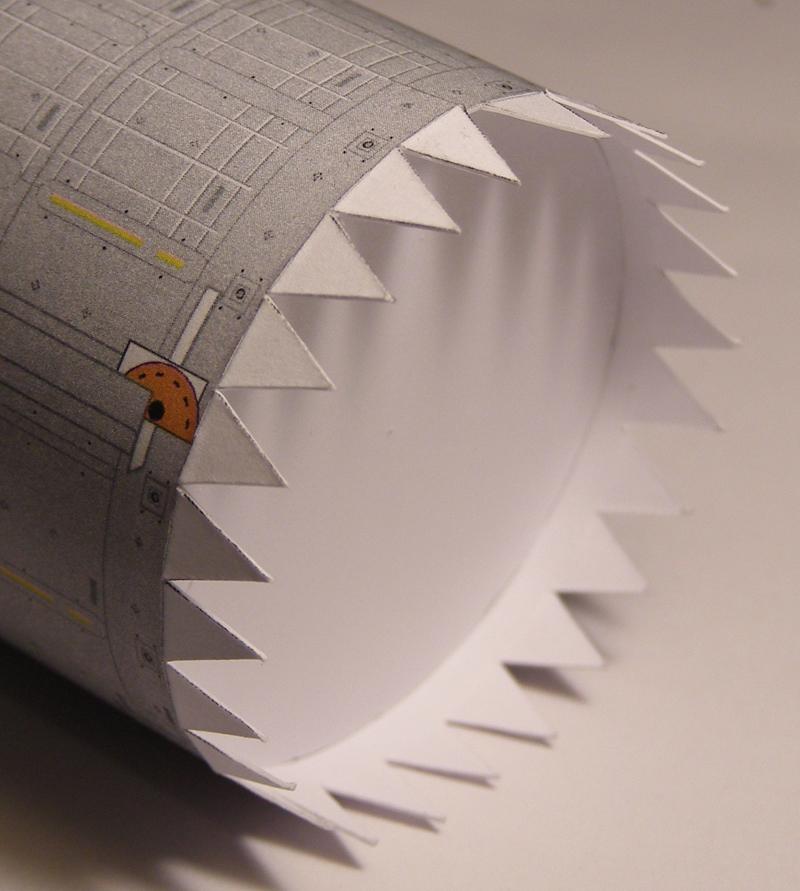
Because the tube itself has to be perfectly round for the end plates to fit correctly, I always reinforce the ends - and in Kibo's case, also the middle as well, with painstakingly cut out circles of 400 gram paper. I use a dial compass to mark them out and cut them carefully. I start at half a millimetre radius smaller than the end-plate size (43.5 mm diameter; 21.75 mm radius) and work my way downwards until a disc fits perfectly inside the tube. I have found that it is silly to force a too-large disc into a tube as it deforms the shape of the tube. It is a laborious task, but the end results are worth it.
I remembered how hard it was to keep the original face of Kibo flat, so I reinforced the new face as well. I avoid gluing right to the edges of the face plate, so as not to make a thick connection showing lots of paper depth when the front plate is fitted.
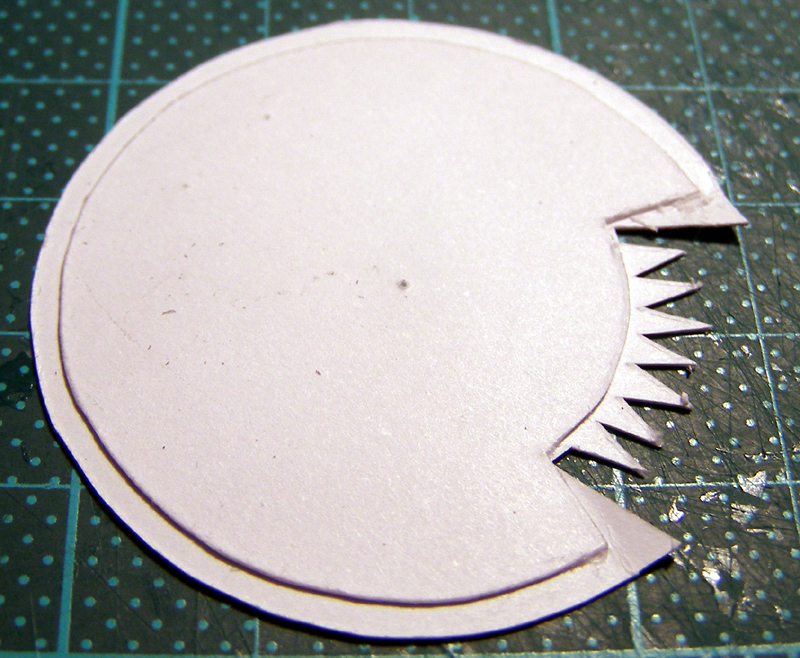
Once the circular reinforcing glue has dried, I glue on the end cone which forms the base of the CBM docking ring. I roll the end cone part around a pen, keeping the edge perpendicular to the pen at all times. This is the best way I have found to roll a cone shape. Just vary the diameter to the object you roll around, to change the diameter of the cone.
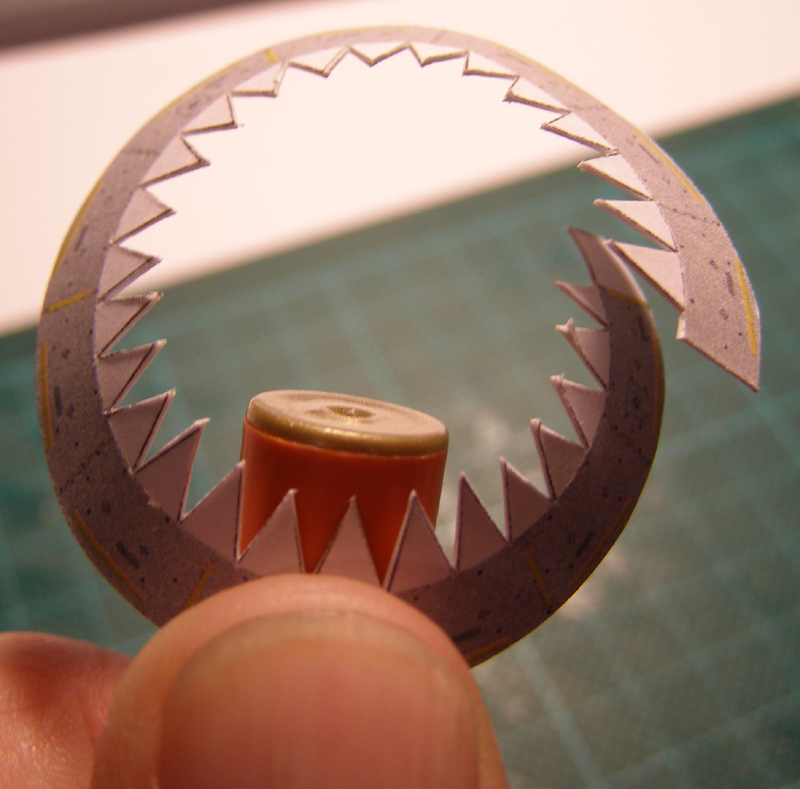
Then I glue the end-cone in place. Sadly, I made a mistake here. 400 gram paper glued in place - as a base for the docking ring - is not rigid enough to support the weight of my kibo, with its brass parts. Your results may vary. I now have to glue a strip from Node 2 to Kibo to stop the cantilever deflecting by about 2 degrees. :(

Around to the front of Kibo now... before I fit it, I cut a hole in the reinforcing front plate. This allows the brass tube which extends from the JEF, to perfectly plug into Kibo. I have marked the center line so it's located correctly.

Then I
very carefully cut a hole in the front plate of Kibo and a small part of the angled recess so that my robot arm support can be located correctly. It's just several layers of paper cut into a wedge, then glue in place. It goes right through the reinforcing plate too - so there's plenty of glue to hold it in place when complete...
Then I glue the front face on, and use my small metal ruler to flatten and secure it to ensure it does not go concave. This can take a few minutes, until I am happy the glue has gone off.
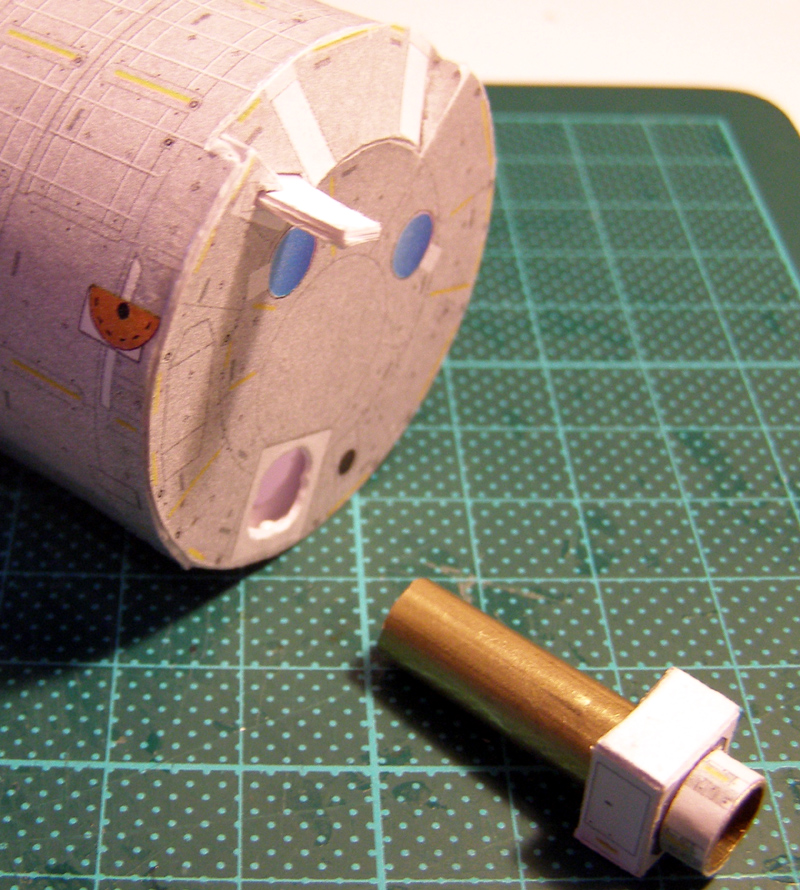
Creating a nice symmetrical airlock stymied me last time round, so I took great care this time. I think it came out ok:
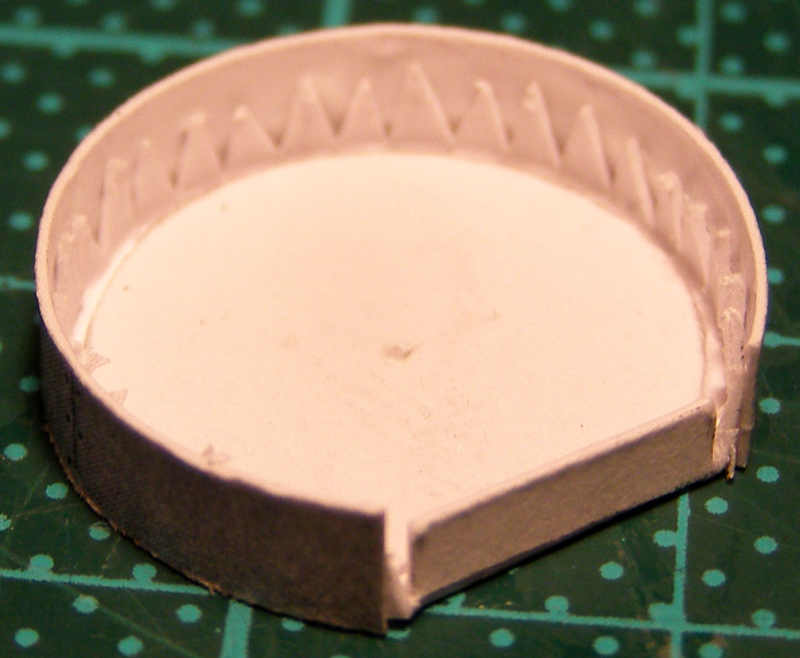
Time to take a look at the new kibo and the old, side by side. The old one is a bit mangled due to me cutting it up. Here you can clearly see the diameter difference of the original Kibo module. This one is 100% correct diameter (44mm) as measured by my vernier calipers - so ot matches all the other shuttle-delivered parts.

Naturally, I always reinforce my docking rings too. But most importantly, I glue in a circular insert. I find I can't ever get anything even remotely circular unless it's got a circle in it. I hope that makes sense. :P

Below is the end plate which ended up being a flop. Note to self, strong where it needs to be, and SOLID where it needs to be. I should have used the photograph mounting board as circularizer an end plate mount point.

At least it looks OK. Got half of it right.
Then I test fit the docking ring of JEM into the hole of Kibo. I have learned the hard way that it is very easy to make a part fit into a hole, than it is to enlarge a hole for a part.

Here you can see the docking ring fits perfectly, the front face is flat as a pancake, the airlock fits beautifully, and that the face is joined to the body of Kibo nicely, with no indication it's reinforced so strongly.
I also ensure the top face of the JEM is nicely flat too, because this is also a challenge. The lower side is reinforced in exactly the same way as the front of Kibo is.

Finally, I can test fit Kibo to Node 2, to make sure it all works as intended...
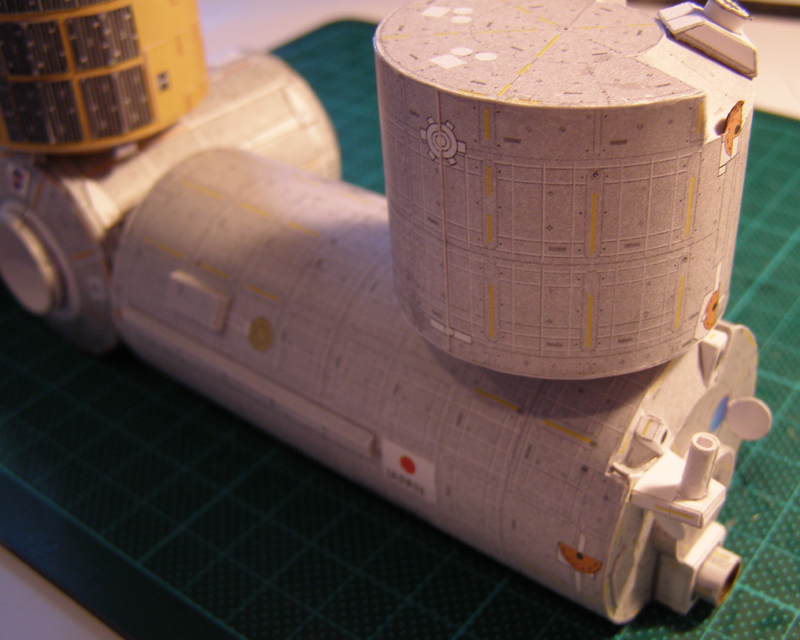
One of the trickiest little jobs of Kibo is to get the long straight panels on the side correct. To get this right, I first bend and glue the interior of the parts, and force them into the correct shape as the glue dries, using two metal rulers to hold them in place. Once the glue dries, they are quite stiff for tiny parts. I then glue a stripe of 400 gram paper inside them, to give me something to glue them down with. Ilet the glue go off a little before gently mounting them in place.
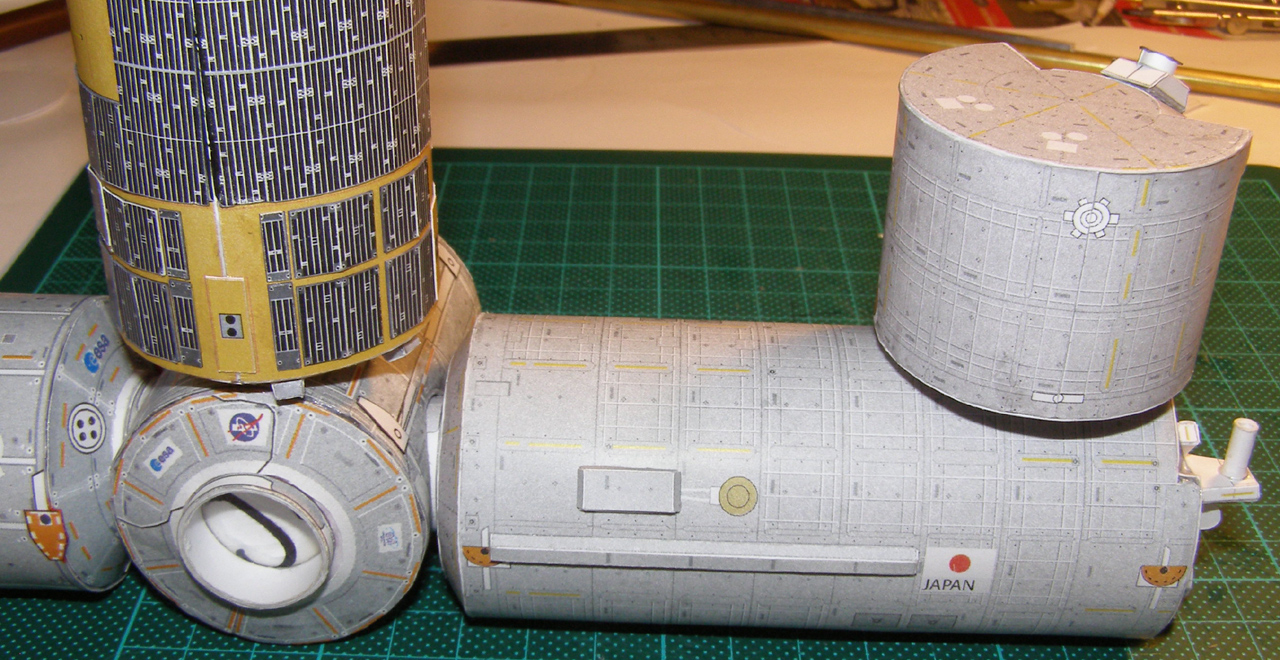
So, now it's on the S3 and P3, and putting it all together.
More photos and the movie, coming soon!